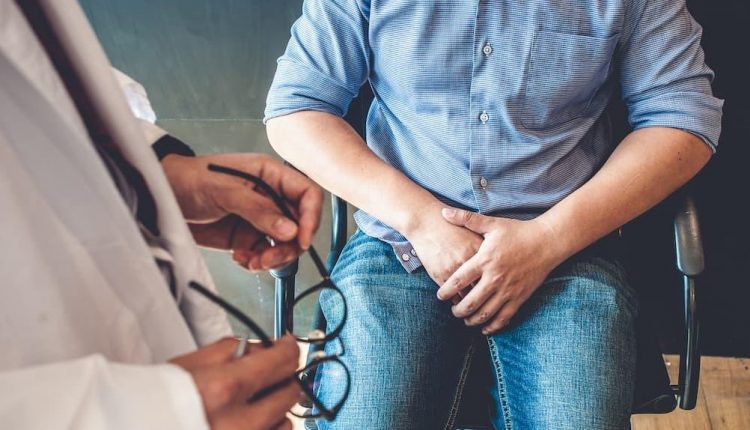
Therapies for the treatment of prostatitis
Prostatitis is an inflammation of the prostate gland, affecting 30% to 50% of sexually active men and generally affecting those who have not yet reached the age of fifty
Once the type of prostatitis from which one suffers has been established, it is possible to outline the appropriate treatment, which can be pharmacological, physiotherapeutic and, rarely, surgical.
Treatment of Acute Prostatitis
For the acute form, an intensive emergency intervention with antibiotics and anti-inflammatories is necessary because the inflammation can degenerate into pelviperitonitis or septicaemia.
Once the infecting agent has been identified, the most suitable antibiotic drug molecule to eradicate the infection will be used, based on the required antibiogram.
The therapy, which is generally carried out in hospital, is accompanied by a special dietary regimen, aimed at ensuring both an adequate nutritional intake and a high fluid intake.
Liquids, in fact, eliminated with urine detoxify and wash the area.
Once the acute phase has been resolved, it is necessary to move on to medium-term reconstitutive therapy, characteristic of the other two forms.
This type of therapy is aimed at
- Strengthen and rebalance the body’s immune defences and the prostate area;
- Reduce the extent of inflammation and associated pain;
- Regulate urine composition;
- Eliminate ongoing bacterial infection;
- Relax the pelvic musculature.
Acute prostatitis will be eradicated, from the inflammatory point of view, if the dosage of interleukin 8, in the seminal fluid, has values in the normal range (31.2 pg/mL in relation to the Kit used).
Bacterial prostatitis
Therapy for bacterial prostatitis is based primarily on antibiotic therapy combined with antiphlogistic therapy and a diet with an appropriate lifestyle.
In case of bacterial resistance, an echo-guided prostate infiltrative therapy can also be performed in order to bring the antibiotic and inflammation therapy into the prostate parenchyma.
Infiltrative therapy consists of bringing a strong antiphlogistic, such as cortisone, into the prostate tissue transperineally under local anaesthesia of the pelvic floor.
Cortisone is usually combined with a mixed antibiotic preparation (depending on the result of the antibiogram performed) to eradicate both the infection and the inflammation of the prostate tissue.
As a rule, 3 or 4 transperineal infiltrations are planned about 7 to 10 days apart, even if the symptoms should diminish in intensity.
In addition, cycles of prostate massage can also be performed to decrease the inflammatory process.
The latter are becoming very popular in recent years and find their origins in Japan.
At one time, prostate massage was thought to make a man more adept at ‘coitus’ and therefore the sultans of the East made much use of it.
In fact, oriental medicine was not slow to realise that this type of massage could be useful not only for erotic pleasure but also for eliminating the residues that are deposited in the prostate gland by decreasing the pressure on the urethra and promoting proper bladder function.
In fact, when there is an inflammatory process within the prostate gland, these infections cause nothing more than an occlusion of fluid within the organ.
As a result, the prostate gland enlarges, causing irritation of the nerve endings and thus producing the sensation of pain; consequently, testosterone levels also decrease (decrease in sexual desire), so prostate massage tends to perform a draining action of the obstructed prostatic ducts, increases the secretion of the acini and prostatic ducts, favouring the restoration of adequate blood circulation in order to better fight the infectious processes.
How to treat Chronic Prostatitis
There are various forms of treatment for this syndrome:
- Lifestyle and proper nutrition (see link Diet and Lifestyle);
- Pharmacological therapy, based on muscle relaxants, painkillers, non-hypnotic antidepressants, alpha-lithics;
- Rehabilitation of the perineal floor and relaxation of the pelvic floor;
- Manual therapy (Thiele massage) and knowledge of the Stanford protocol with trigger point relaxation and desensitisation;
- Electrostimulation and non-invasive neuromodulation;
- Acupuncture;
- Botulinum toxin injections into the muscles involved;
- Implantation of a sacral neuromodulator.
A-bacterial prostatitis
A-bacterial prostatitis, also called pelvic pain syndrome, is believed to be produced by a neuromuscular disorder related to postatitis.
In this case, therapy would consist of re-education of the pelvic floor.
In addition, a-bacterial prostatitis responds very well to drug therapy.
Diet for Prostatitis
The dietary regime that accompanies therapy is characterised by nutritional choices that reduce over-processed and poorly digestible foods.
In other words, fresh, whole foods, cooked in an unprocessed manner, are preferable.
It is, therefore, important to consume an adequate amount of fruit and vegetables, whole grain products, fish and meat, extra virgin olive oil, avoiding fried foods and foods that induce allergies or intolerances.
It is essential to drink plenty of water (2-3 litres a day on average), to purify and hydrate the body and to maintain high diuresis, the kidney’s depurative activity.
A good level of purification is indicated by clear, almost transparent urine.
Surgical treatment
Recourse to surgical treatment only occurs in special cases, where drug therapy has been unsuccessful or is not applicable and in cases where the urinary channel is obstructed.
Surgery may involve an incision in the inflamed tissue or removal of the organ.
Read Also:
Emergency Live Even More…Live: Download The New Free App Of Your Newspaper For IOS And Android
Colour Changes In The Urine: When To Consult A Doctor
Acute Hepatitis And Kidney Injury Due To Energy Drink Consuption: Case Report
Bladder Cancer: Symptoms And Risk Factors
Enlarged Prostate: From Diagnosis To Treatment
Male Pathologies: What Is Varicocele And How To Treat It
Continence Care In UK: NHS Guidelines For Best Practice
The Symptoms, Diagnosis And Treatment Of Bladder Cancer



